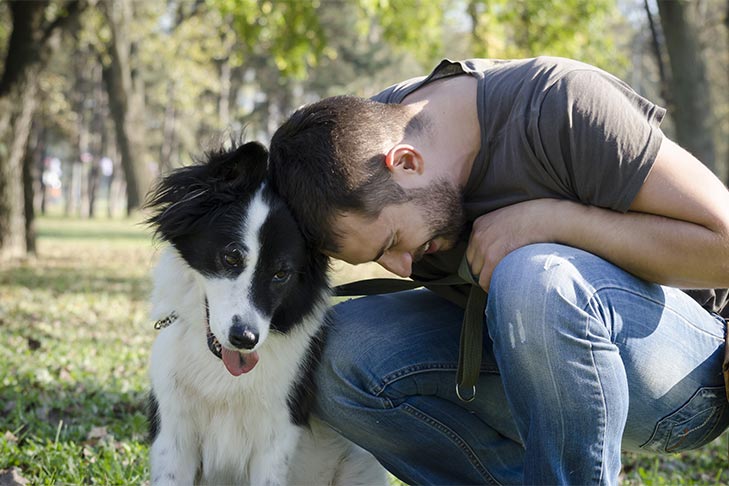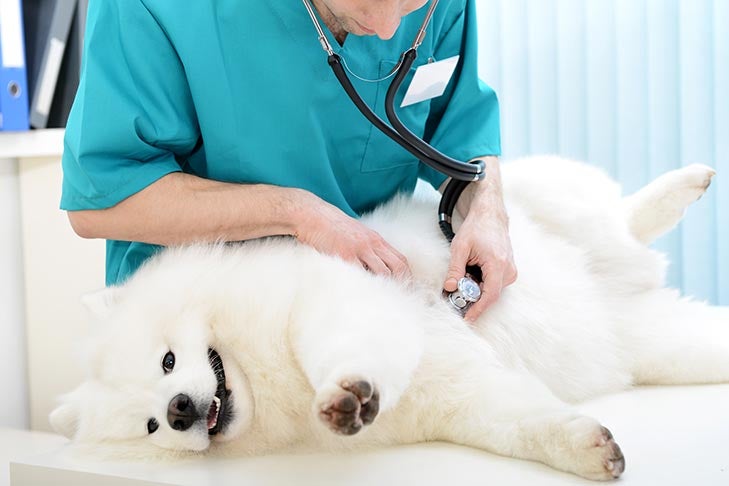
An outbreak of the contagious disease brucellosis has hit Iowa, after starting at a dog breeding facility in Marion County, southeastern Iowa.
Brucellosis is a contagious disease caused by the bacterium brucellosis, specifically Brucella canis in dogs, which can result in infertility, abortions, and stillbirths. Brucella canis can devastate a kennel, and it is zoonotic, meaning it can infect humans too. Handling infected canine blood, semen, or reproductive tissues can be a source of infection to humans—though cases of infection in humans are rare.
AKC.org consulted veterinarian and diagnostics specialist Dr. Matthew Krecic for more information about brucellosis and how breeders can avoid this contagious disease in their kennels.
Symptoms Of Brucellosis in Dogs
Clinical signs are often vague and non-specific, if they develop at all.
Since many dogs have no clinical sign of an infection, and yet the disease can have a huge impact on reproductive success, all dogs involved in a breeding program should be tested for the presence of brucellosis, even if they show no clinical signs of the disease.
For stud dogs, some infected dogs will have epididymitis, scrotal enlargement (which can be painful), and scrotal dermatitis. For bitches, some will abort in late gestation without any other clinical signs.
Sometimes an infected bitch will deliver stillborn puppies—but not always. Some bitches deliver weak puppies. Some bitches that have had unsuccessful pregnancies go on to deliver normally in the future. However, these bitches may still in fact be infected.
While brucellosis affects the viability of the litter, it doesn’t always affect fertility. An infected bitch will often continue to go into heat and breed.

Brucellosis in Humans: Risks and How to Avoid Infection
There’s no vaccine for either humans or dogs, though infection in humans in the U.S. is rare. However, certain populations are considered more vulnerable than others, namely: pregnant women, children, and those with compromised immunity.
Brucellosis is carried in bodily fluids, so infection can spread to humans through direct contact with the urine, feces, blood, semen, milk, vaginal secretions, and other fluids of an infected dog.
Also beware contact with aborted dog fetuses from infected bitches, as these can also carry infection. In very rare cases, humans might contract the disease by breathing in air contaminated with the bacteria.
The disease can enter the body through broken skin, or simply through the eyes, nose, or mouth. To avoid infection, always wear protective clothing (i.e. gloves, goggles, and a face mask) when handling dogs that have brucellosis, or anything has come into contact with them. Never allow an infected dog to lick you, particularly on your face. And make sure to wash your hands well after handling dogs.
Brucellosis in Humans: Symptoms and Treatment
Symptoms tend to appear in humans within five to 30 days, most often three to four weeks after exposure, though sometimes it can take months. Be alert for flu-like symptoms, such as fever, body pains (particularly in the back), enlarged lymph nodes, headache, night sweats, vomiting, diarrhea, poor appetite and weight loss, and/or a sense of weakness.
If you suspect you have come into contact with an infected dog, or that you have symptoms of brucellosis, consult your doctor for a blood test. As with dogs, the disease is treated with antibiotics.

Testing For Brucellosis in Dogs
Several tests are available through veterinarians and commercial reference laboratories. These include rapid slide agglutination test (RSAT), agar gel immunodiffusion (AGID), and polymerase chain reaction (PCR). Culture of the bacteria is the gold standard test.
The RSAT identifies the presence of antibodies to combat the infection, not the bacteria themselves. The test requires one drop of a dog’s serum (the clear fluid remaining after collected blood has been allowed to clot), which is combined with Brucella antigen—a sample of brucellosis bacteria, supplied with the test. If the serum contains antibodies for Brucella canis, it will agglutinate or adhere to the antigen, causing clumping that your veterinarian sees. This test is quite sensitive and veterinarians can have in-hospital results within two minutes.
If the dog tests positive, there is a second step that involves combining two drops of the dog’s serum to two drops of another reagent contained within the test kit. Then this solution is combined with the Brucella antigen and clumping is once again determined within two minutes. If clumping is seen, the dog is presumed to be infected. Confirmation via AGID, PCR, and/or culture tests is recommended.
If clumping is not seen, the dog may not be infected, or the infection may only be in its early stages. In this situation, re-test the dog in three to four weeks with the RSAT.
Treating Brucellosis in Dogs
Veterinarians often prescribe antibiotics, but their success at resolving the infection is questionable because the bacteria like to hide within the dog’s cells, and antibiotics are only moderately able to penetrate cells to clear all of the bacteria. Therefore, relapses of infection are common after stopping antibiotics.
Rather, the body’s own defenses through cell-mediated immunity are often a better way to clear bacteria within cells.
Infected stud dogs should be removed from the breeding program and neutered to reduce the risk of infection to humans (i.e. their owners, trainers, handlers, and others involved in their care.).
Infected bitches could seemingly “recover” and deliver normal litters in the future, while still, in fact, harboring the bacteria. In such cases, transmission to the offspring in utero is probable.

Preventing a Brucellosis Outbreak—Information for Breeders
Prevention of any infection is so much easier than managing the consequences of infection. Antibiotics often do not resolve the infection, and no vaccine is available. Pre-emptive testing is therefore best.
Have your veterinarian test all dogs in your breeding program for brucellosis prior to every breeding and/or every six months. This is also an ideal time for your veterinarian to examine your dogs completely to ensure health, successful breeding, and healthy litters. The RSAT test is a fast, easy, and economical way to screen dogs and hopefully prevent brucellosis from affecting your kennels.
Managing a Brucellosis Outbreak
A brucellosis-affected kennel is a challenge to manage. With guidance from a veterinarian, the kennel should be quarantined and infected dogs eliminated. If these dogs are to be treated and/or retained as pets, they should be neutered and moved to separate housing. Disinfect and handle dogs and their discharges/secretions, including urine, with gloved hands.
If a breeder suspects a brucellosis outbreak, they should contact their veterinarian, who will provide a course of action.

